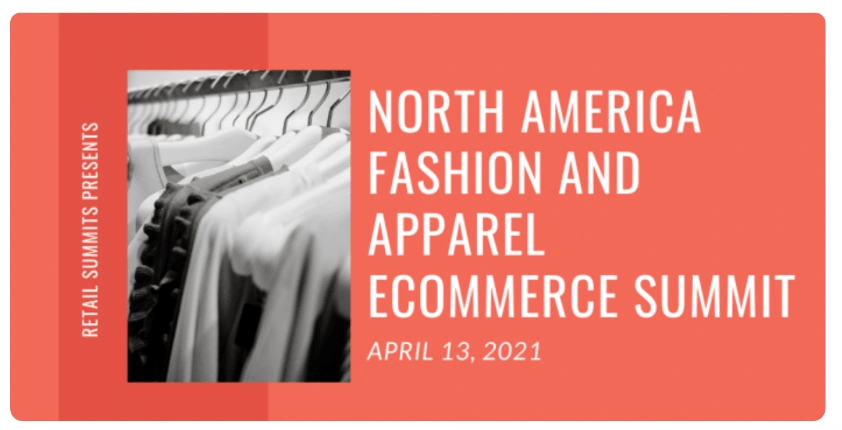Event Details
Date & Time : April 13, 2021 10:00 am
Join at : North America
Introduction
The panel shared their thoughts on the current and prospective challenges for the fashion & apparel industry. The participants agreed that the management & better utilization of customer data, is the key to increased customer engagement. The predicted challenges bring with them a set of opportunities that brands must be prepared to leverage.
Here are some of the key questions and answers discussed on this panel.
Question: What are the key components of building a loyalty program for customers?
Answer: A modern loyalty program must have three key components:
- It must evolve from only transactional loyalty to a multi-dimensional program encompassing behavioral, advocacy, social media, engagement & emotional loyalty.
- The program must be data driven, catering to specific business objectives.
- The program must be self-running with minimum monitoring & administration overhead.
Question: What are some practical ways in which fashion and apparel brands are using their data to improve acquisition and/or retention?
Answer: Understanding and focusing on the customer lifetime value is critical. The top 20% of the customer base is responsible for 80% of the revenues. Hence, while building lookalike audiences to power customer acquisition, it is advisable to use the top 20% of the customer base, rather than the entire set. 70-80% of first-time buyers do not make a second purchase; making it imperative for brands to engage with them immediately after the first purchase. Brands must have automated mechanisms & “hooks” in place encouraging first time buyers to make their second purchase. Retaining customers becomes easier with every subsequent purchase.
Question: How can a loyalty program proactively identify “lost” or “at-risk” customers? What measures can be taken to maintain their loyalty?
Answer: A highly data driven program must be able to analyze customer behavioral patterns -tracking last purchases, engagement, email open/click, rewards redemption, etc. Brands must look for early indicators and create strategy to engage these customers. Activities like mailing product care instructions, conducting customer surveys etc. work well to engage the customer. Its best to keep customers engaged through a multi-dimensional loyalty program where customers can earn points by activities like social sharing, writing reviews etc. When these customers need to purchase again there is a high probability the customer will purchase from the brand with which they are engaged.
Question: What are the challenges faced by the fashion industry, and how have companies overcome these?
Answer: Understanding of the different channels for customer and prospect engagement has been a consistent problem. Not all customers go through mails, and brands need to identify other channels to reach these customers. Paid ads are quite successful in this regard.
Data privacy updates targeting third party cookies will be a big area to look out for. The exact impact cannot be predicted but in the short term, brands need to use first party data more effectively.
With COVID, brand loyalty has drastically decreased. To address this, brands must offer convenience, great service and a value proposition that transcends the monetary. Customers are now making buying decisions based on sustainability. Brands must consider their sourcing and their overall environmental & social impact.
Question: Is there any forecast on some upcoming opportunities that fashion and apparel brands could capitalize on?
Answer: With restrictions on third party cookies, the data that brands collect from their customers becomes more important. A loyalty program can help gain more insights especially if the customers are buying products from third party stores. Loyalty program features like receipt scanning provide insights into the products the customers are buying, along with their other preferences.
Question: What makes the fashion and apparel industry the most unique?
Answer: Impulse buying for non-functional items can be quite high in the fashion industry. This is an opportunity for brands to increase their sales. Customers love to express themselves and apparels have limitless personalization possibilities which is another unique factor for this industry.
Question: Is there any data or research to highlight the social impact in the apparel industry?
Answer: Customer buying behavior is changing based on the social impact brands create. Recent trends show that customers tend to buy from brands that source their raw material sustainably and are actively involved in giving back to society. The charity donation feature within loyalty programs allows customers to donate to the charitable foundations of their choice. This is gaining popularity with customers, especially in the post-Covid world.
Summary
This virtual event covered important trends and statistics in customer acquisition and retention.
- With reduced brand loyalty in the COVID era, brands can retain customers & improve loyalty by providing convenience, great service and a proposition that transcends the monetary.
- New methods of data collection and how this data is utilized will be important.
- Stricter data privacy laws will create some challenges for all brands. With the help of loyalty programs these challenges can be converted to opportunities.
- Sustainable sourcing and the social impact created by brands is changing buying behavior. Charity donation feature within customer loyalty programs can help win customer loyalty.



